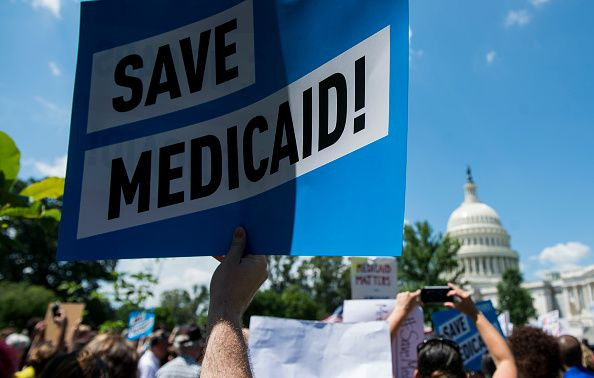Healthcare News: Trump Administration Overhauling Medicaid

KEY POINTS
- Medicaid was first adopted in the 1960s, designed to provide healthcare for the nation's poorest and most vulnerable
- Medicaid spending is projected to reach $1 trillion by 2027
- The administration said converting to block grants would allow states to craft their own programs
The Trump administration unveiled a Medicaid reform program Thursday that would turn funding into a block grant program to curb spending and shrink coverage.
About 20% of low-income Americans depend on Medicaid for healthcare, more than 71 million people, including nearly 7 million enrolled in the Child Health Insurance Program. Conservatives have long sought to overhaul the program, and the administration plan seeks to align Medicaid along the lines of commercial plans. The government also would gain the ability to negotiate drug prices.
Democrats accuse President Trump of trying to sabotage health coverage and were expected to wage a court fight against the change, which gives states the right to scale back coverage for certain populations currently eligible under the Affordable Care Act – Obamacare – which expanded the eligible adult population to those at 133% of the poverty line.
Sen. Patty Murray, D-Wash., the ranking Democrat on the Senate health committee, accused the administration of trying to gut Medicaid.
Just today, the Trump Administration advanced another GOP plan to gut Medicaid—continuing its number one health care priority to make coverage more expensive & harder to get.
— Senator Patty Murray (@PattyMurray) January 30, 2020
I will keep working to stop their harmful attacks on families’ health care. #ProtectOurCare https://t.co/HhNFxLFM79
“Government has a solemn obligation to provide for the most vulnerable among us,” Seema Verma, the administrator of the Centers for Medicare and Medicaid Services, said in introducing the Healthy Adult Opportunity policy.
Medicaid spending totaled to $600 billion in fiscal 2017, with spending per individual ranging from $3,555 for children to $14,700 for seniors. Outlays represented 9.5% of spending in the fiscal 2018 federal budget.
Verma said Medicaid as it is currently being run “is becoming increasingly tenuous.” She noted it is weighing down state budgets – consuming nearly 29% in fiscal 2017 – and squeezing out other priorities. As the baby boom population ages, costs for long-term care are expected to rise 500% by 2050.
“This looming cost crisis threatens the viability of the program,” she said.
She noted the ACA added to the Medicaid rolls, with an additional 15 million working age adults covered since 2014.
CMS statistics indicated the federal government covered 63% of 2018 Medicaid expenditures. Expenditures are expected to grow to more than $1 trillion and 3.3% of gross domestic product by 2027.
Verma said current federal rules, focused on process rather than outcomes, make it difficult for states to craft programs more in step with the needs their populations.
“The Healthy Adult Opportunity represents an innovative and historic approach to surmounting Medicaid’s structural challenges,” Verma said. “It provides rigorous protections for all Medicaid beneficiaries, and for the first time it aligns financial incentives to improve quality of care and health outcomes for Medicaid adults by giving states unprecedented flexibility to administer and design their programs to meet this population’s very unique needs.
“In exchange for this flexibility, states accept greater accountability for managing the program and demonstrating real results.”
© Copyright IBTimes 2024. All rights reserved.






















